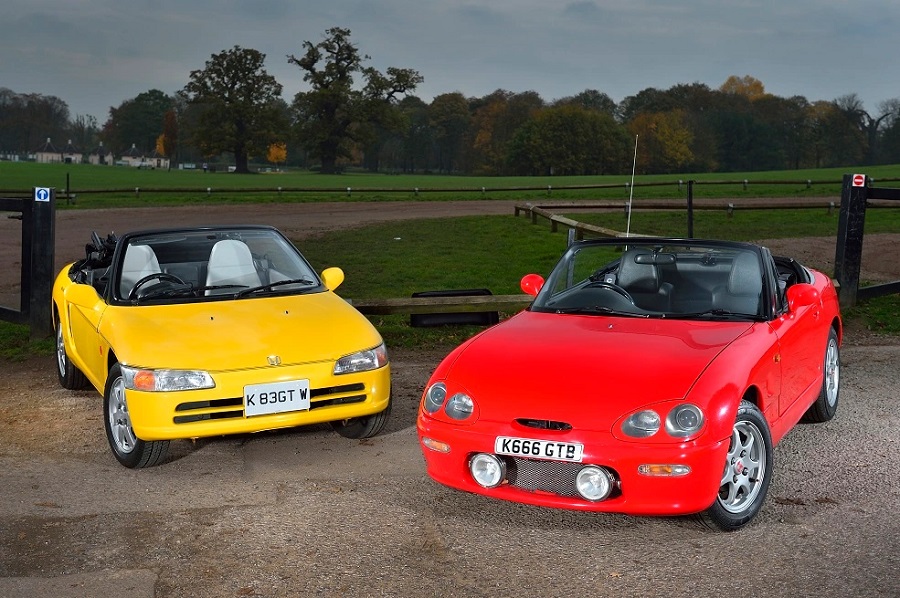Only naturally found in Japan, these little vehicles are experiencing a boom in enthusiast popularity. Here are the best kei cars of all time!
Considering a kei vehicle as your next used car purchase? Cool! But first things first, let’s set some ground rules. What exactly makes a kei car, a kei car?
What is a Kei Car?
Well, in their Japanese homeland, there are very strict specifications that cars have to adhere to in order to be an official kei-class vehicle. At the time of writing, a kei car must have a tiny 660cc engine and produce no more than 63hp. They’ve got to be pretty small too – no more than 3.3 meters long and 1.5 meters wide. Perfect for a busy Japanese metropolis, but on paper some people might struggle to see the international appeal.
Admittedly, kei cars are an acquired taste, but there are pockets of enthusiasts worldwide who appreciate their back-to-basics approach, often cute aesthetics, and occasional daft names (looking at you, Suzuki Every Joy Pop Turbo). If there’s one thing that these vehicles aren’t lacking, it’s character and charm.
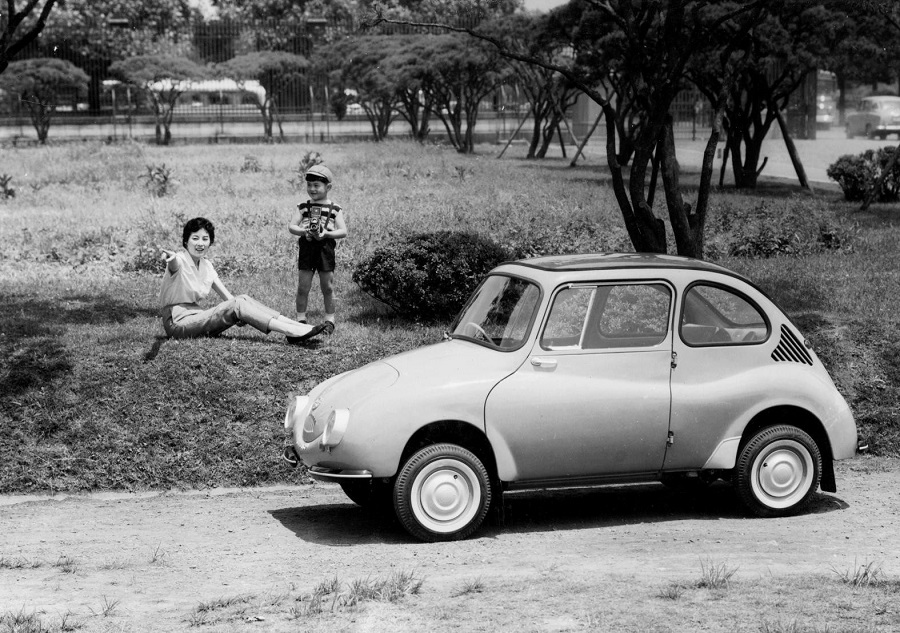
Kei Car History
However, the kei car story hasn’t always been so cutesy. In truth, they were born out of post-wartime necessity as the Japanese public began to gather itself back up in the wake of devastating defeat to the United States. To incentivize (and help) workers to contribute to the country’s GDP again, and to promote the growth of the car industry, the Japanese government came up with kei cars. These low-powered vehicles would cost about as much as a motorbike once tax allowances were taken into account, while offering more practicality for families and business. It would also allow Japan’s fledgling car industry to blossom into the titan it is today.
Over the years, kei cars have gone through a handful of different technical regulations. When they debuted in 1949, manufacturers were limited to using measly 150cc engines, but mercifully that got raised to 360cc in the 1950s. This led to the arrival of vehicles such as the aptly-named Subaru 360, as pictured above. The rules remained unchanged until 1976 when the engine size limit grew for a second time, this time being pinned at 550cc. For reference, the Suzuki Cervo/Whizzkid is the sort of car that emerged when these rules came into play.
Then in 1990, 660cc engines were permitted, so long as they were capped to 63hp. Then, in 1998 the length and width allowances grew by 10cm each.
2014 Tax Hike
To this day, the most recent change is one that came about in 2014. This time it wasn’t to do with the cars themselves, but instead was to do with their tax allowances that helped spark the kei movement in the first place. Between 2013-2014, tax on kei cars rose by around 50%; a move met with dismay by the Japanese public. Still, the outright retail price of a kei car remains significantly cheaper than that of a regular supermini or hatchback, so the genre continues to serve a purpose in Japanese society. That steady mainstream local demand is complemented by a burgeoning enthusiast scene for kei cars, not only in Japan, but abroad too. As such, we’re pretty sure that kei vehicles are here to stay for a little while longer yet.
Anyway, now that you’re up to speed, let me guide you through some of the kei genre’s greatest hits!
Best Kei Cars To Import From Japan
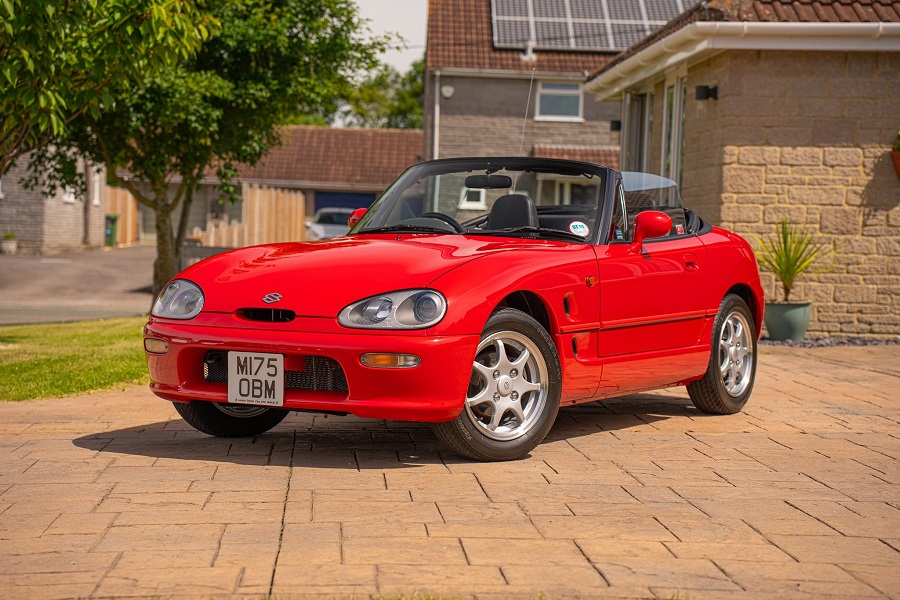
Suzuki Cappuccino
Perhaps the best-known kei car of them all is the Suzuki Cappuccino. This sporty little convertible first arrived in 1992 and looked decidedly modern when parked up next to cars like the the Mk1 MX-5 Miata. The Cappuccino isn’t just all show either. Of course, being a kei car, it’s hamstrung by strict performance regulations, but its 12-valve three-cylinder engine is still a pokey little thing. It’s turbocharged, and redlines at 8500rpm, but the car’s responsive attitude gives it a sense of urgency from as little as 2k onwards.
The power unit is hooked up to a 5-speed short-throw manual gearbox which sends power to the rear wheels via a limited-slip differential. There is independent suspension at each corner, and although it might top out at less than 90mph, its 679kg (less than 1500lb) kerb weight and perfect 50:50 weight distribution makes it a total riot to drive through the twisty stuff.
Somewhat unusually for a kei car, the Cappuccino was sold in limited numbers in foreign markets. Its removable hardtop was therefore very useful to guard against temperamental British summers, for instance. Though, when the sun was shining, you could revel in its rays in a variety of ways. The hard top is a three-piece aluminum design, allowing you to choose between fully closed and open setups, as well as a targa top.
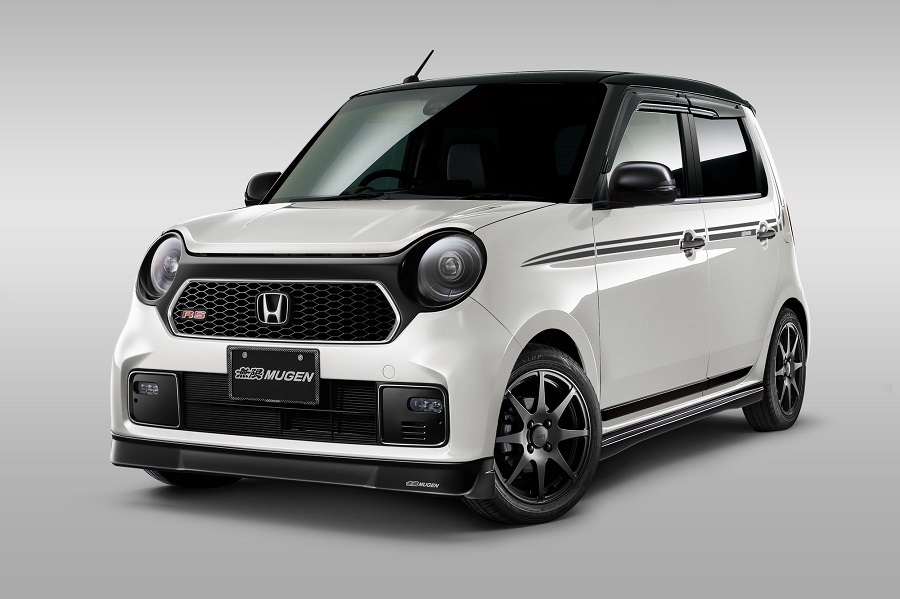
Mugen N-One
Honda’s N series of runabout kei vehicles are some of the current best-sellers in modern Japan. As such, there’s enough demand for Honda to target a more niche enthusiast audience directly, by offering a factory modified Mugen version of the N-One supermini. Available in either yellow or white, the Mugen N-One is essentially My First Tuner Car. The options are limited, but it gives (mostly young) owners their first taste of what it’s like to modify a car.
Keeping with the theme, all the upgrade parts that Mugen makes for the N-One correspond to the sort of first mods that any youngster would opt for on their first project car. You can get a stainless steel performance exhaust with several tip finishes available, ranging from carbon to rainbow titanium. As for styling mods, you can give you N-One extra aero in the form of a splitter, sideskirts, and a rear spoiler add-on, which Mugen describes as a Gurney Flap. 15 inch forged FR8 alloys are available as well, as are a set of upgraded dampers. Then, on the inside, you can kit your N-One out with an array of Mugen mats, gear knobs, and pedals.
The N-One even has its own amateur racing series, which James May got to experience in his recent Amazon docuseries.
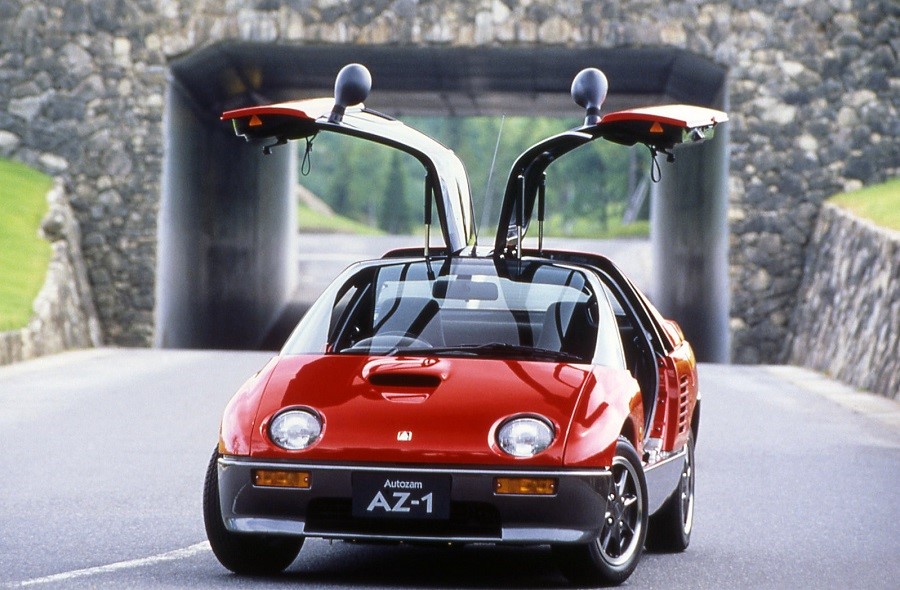
Autozam AZ-1
The plain bonkers Autozam AZ-1 comes from a time when Mazda was creating sub brands for the fun of it. There was Eunos (fun and youthful), ɛ̃fini (a luxury brand) and the branch that the AZ-1 belongs to – Autozam. Autozam, evidently, focused on small-scale and kei vehicles. None of those new brands lasted very long, but before the multi-identity project bit the dust, Mazda did manage to churn out a few oddball cult heroes like the AZ-1.
Developed in partnership with Suzuki (Suzuki sold a badge-engineered version called the Cara), the AZ-1 is a two-seater kei car with supercar styling. Those gullwing doors are impossible to ignore, as is the car’s overall quirky aesthetic. You’ll either love the way the AZ-1 looks, or hate it. That, combined with an optimistic price tag at launch, meant that it wasn’t exactly a huge commercial success. Instead, buyers for this sort of vehicle flocked to the aforementioned Cappuccino and Honda Beat (more on that later).
However, get behind the wheel of an AZ-1, and you realize that it’s a lot more finely tuned than either of those cars. Marketed as “The Ultimate Handling Machine”, this is as close as you can possibly get to go-kart characteristics from a full-size car. Oh, and we couldn’t cover the AZ-1 without mentioning RE-Amemiya’s GReddy demo vehicle. Google it and witness your jaw drop in awe.
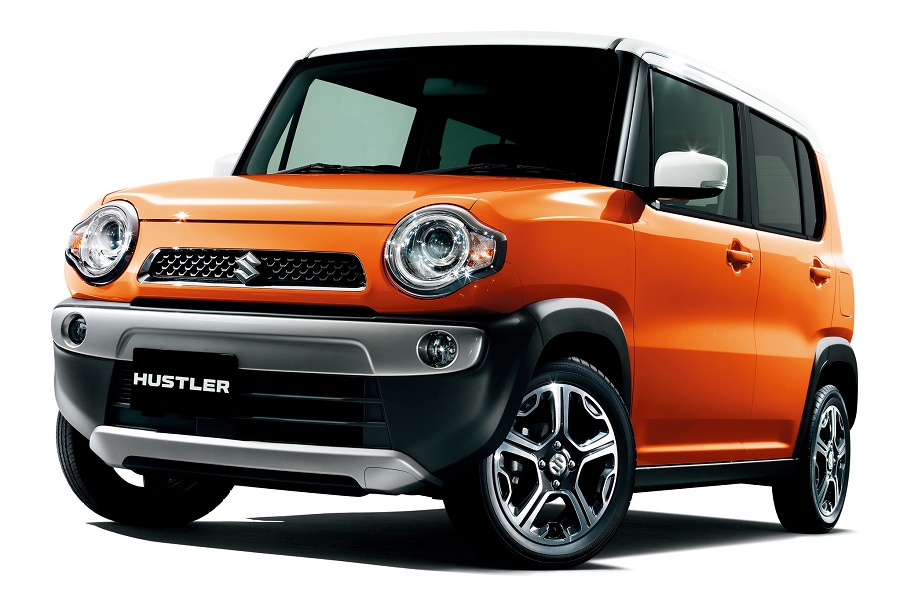
Suzuki Hustler
You might be wondering why the Suzuki Hustler is here instead of the Jimny. The answer is that, if you really want to experience the best that the Jimny has to offer, you really ought to buy the bigger-engined version with extended wheel arches; two attractive features which void its kei car status in upper trim levels.
Instead, the Hustler is a kei car through and through. This rugged little dude is an arch-rival to the equally fun Daihatsu Taft, boasting off-road aesthetics and a big personality. There are all sorts of styling packages that you can get for the Hustler, ranging from urban SUV chic as above to steel-wheeled utilitarian guises. It doesn’t quite have the same off-roading credentials as its Jimny stablemate though. The Hustler is built around a monocoque chassis rather than the chassis-on-frame skeleton of the Jimny. That does however mean that it handles and rides better than the Jimny on regular day-to-day journeys. Plus, if by chance you do end up needing to go off-road in it, the Hustler is available with optional 4WD.
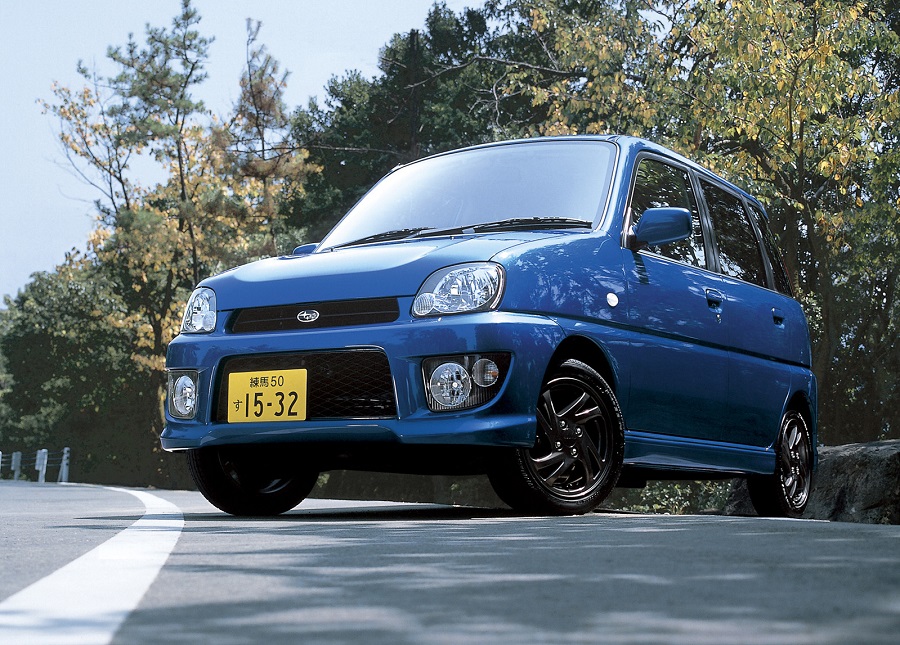
Subaru Pleo RS
You might have seen the memes about slightly tragic WRC-liveried Subaru Vivios. However, if you want an Impreza WRX but can’t afford one, the connoisseur’s choice is arguably the Pleo RS. This little kei minivan is packing a supercharged 4-cylinder engine (still limited to 660cc though) that sang up to 8000rpm, partnered by a five-speed manual gearbox and all-wheel drive system. On paper, that’s quite the spec sheet!
In practice, well, dynamically it’s just not as adept as the sportier kei cars on this list. But you can forgive it that for its WRX-esque aggressive bodywork, two-tone black and blue interior, and boxy practicality. So, it’s not quite a proper driver’s car, but as a little city runabout, you could definitely do worse.
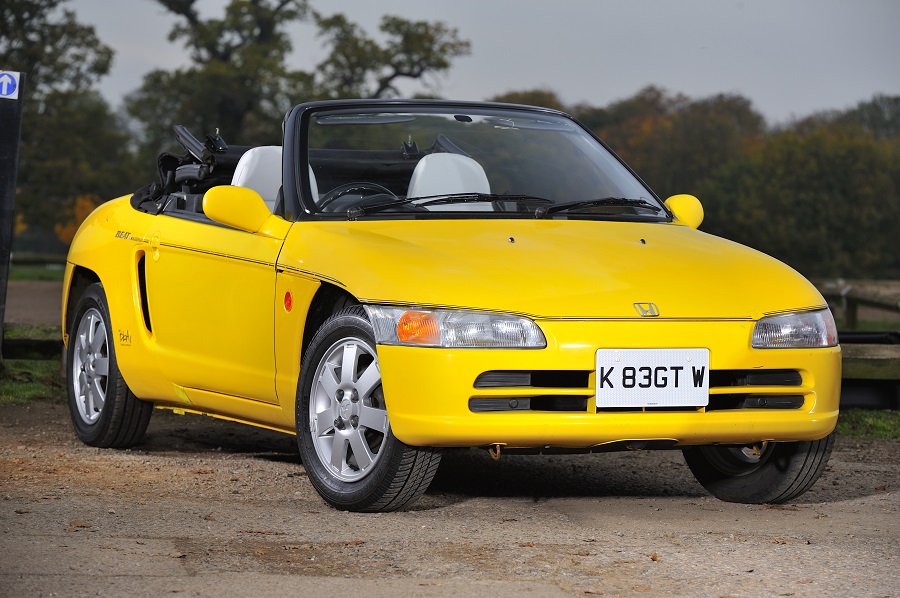
Honda Beat
As promised earlier, the Honda Beat is another ’90s kei convertible which makes it onto this list. The arch rival to Suzuki’s Cappucino, Honda’s naturally-aspirated mid-engined Beat out-revs the former car with a redline pinned at 9000rpm. Who needs an S2K, right? The five-speed manual gearbox is a joy to use as well, and although it’s easy to overestimate the handling capabilities of sports cars that are this light (1680lb / 760kg), the Beat, will feel suitably planted if you equip it with a good set of tires.
It’s also a bit more exotic than the Cappuccino, since the Beat never made it into foreign markets. For extra bonus points, it also has the historical accolade of being one of – if not the – last cars that Soichiro Honda himself ever approved. And if that’s not enough intrigue for you, you might be interested to hear that you could specify these cars from the factory with zebra-print seats. Classy.
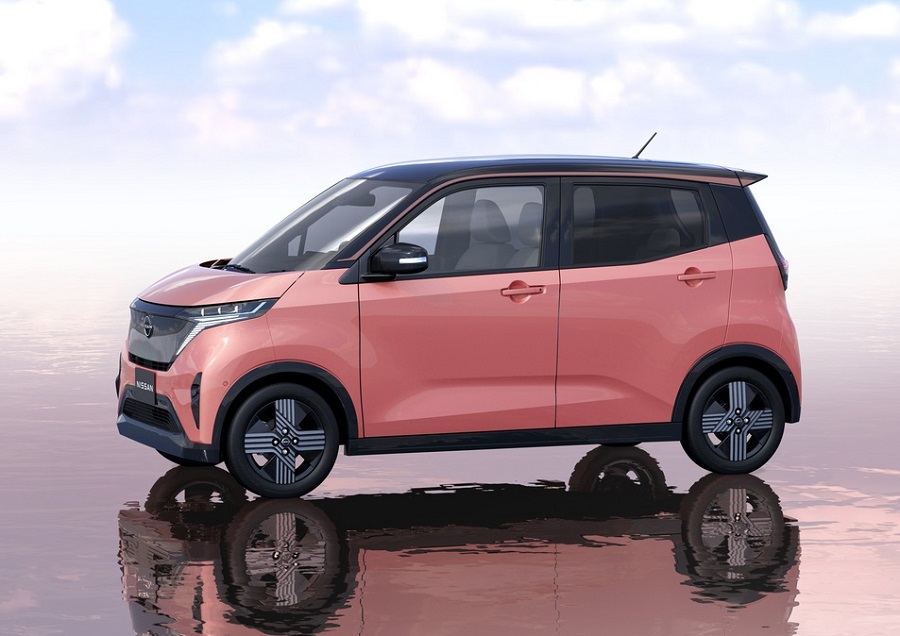
Nissan Sakura
Times are changing in the automotive world, and that means kei cars will have to change too. For now, change looks like this, the Nissan Sakura. As far as I’m aware, the Sakura is the first ever all-electric kei car, which raises a big question straight away. How does an EV fit into the kei regulations?
Well, it’s easy to get the dimensions right. Just because a car is battery powered doesn’t mean it has to be any bigger than an ICE kei car. As for the power limits, well there is no engine to speak of, so the 660cc rule goes out the window. It is, however, capped at the equivalent of 62hp.
As a city commuter car, the Nissan Sakura makes an awful lot of sense. It’s capable of 112 miles on a full charge, and can reach 80% battery capacity after just 40 minutes if you use a fast-charger. Alternatively, if you use a simple home charger, the Sakura will take 8 hours to charge fully overnight. Realistically though, you aren’t going to be running it dry that often, so in the real world, charge times will be shorter. We’re a fan of its Ariya-based styling too, and the pastel two-tone paintwork is another vibrant plus point.
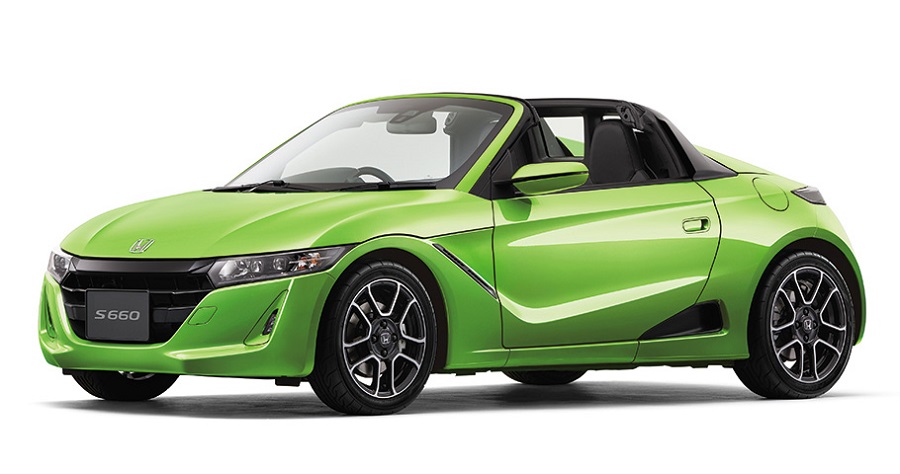
Honda S660
You might have assumed that fun kei convertibles were a relic of the ’90s, but you’d be wrong! The delightful Honda S660 looks like a baby NSX roadster, so immediately it’s in our good books. The spiritual successor to the Beat, the S660’s name also harks back to a more classic tiny Honda convertible – the S600. The core recipe is very comparable to both of those cars, featuring playful handling and a small but enthusiastic engine. Specifically, the S660 comes with a turbocharged 660cc three-pot, but as you can imagine there’s quite a healthy modern tuning aftermarket for this car. A few internal upgrades here, and more boost there, and you’ll soon find that the S660 turns into a serious tool for the touge.
When it first launched, rumors circulated that Honda was looking to develop a turbo 1.0-litre version of the car for right-hand drive export markets. But sadly, that wonderful concept never came into fruition.
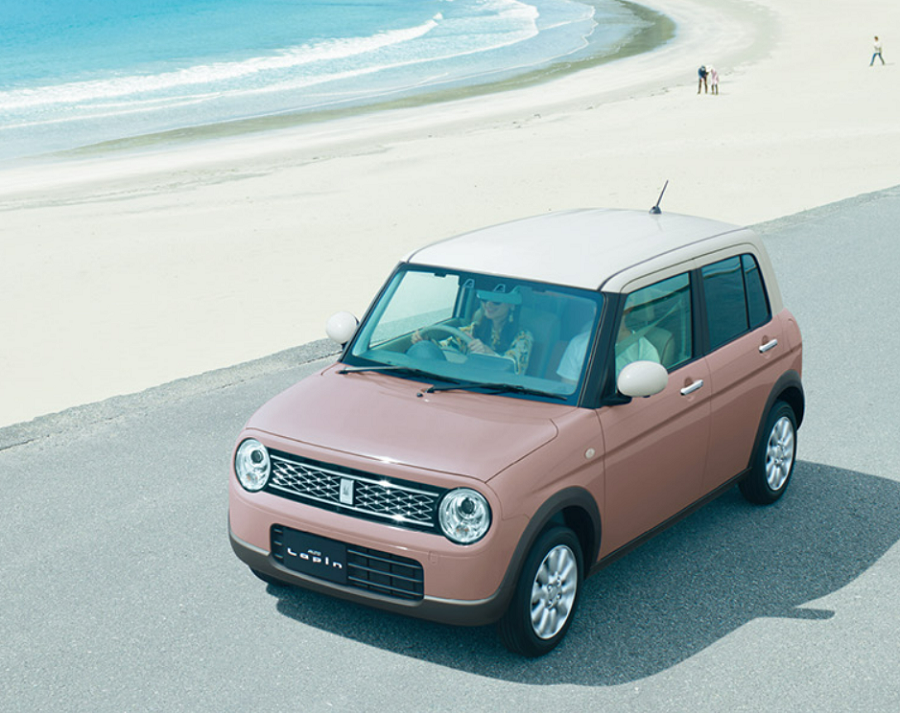
Suzuki Alto Lapin / Lapin LC
If you want to drive around feeling as though you live in a Studio Ghibli film, the Suzuki Alto Lapin is the car for you. For full disclosure, I adore this little thing. It’s not fast at all, but it’s packed full of adorable charm. Visually, its cartoon-esque styling and pastel color palettes play into a romanticized Japanese aesthetic, which continues into the inside. The Alto Lapin’s cabin space is bright, surprisingly roomy, and full of practical features for daily commuting or weekend adventures.
Suzuki has designed this car to feel more like a lifestyle companion than a soulless machine, which is evident throughout its marketing. Also, if you’re wondering about the name, yes ‘Lapin’ is the French word for rabbit. Look closely, and you’ll find line art of bunny ears on the rear window trim. Plus, on the dash display, you’ll be greeted by an animated rabbit which even remembers to wish you a Happy New Year, amongst other stuff that you’d only ever find in the Land of the Rising Sun. In short, the Suzuki Alto Lapin is everything you’d expect a JDM supermini to be.
For those of you who prefer a more retro look than this, the Lapin LC is a slightly restyled version pitched as being the more fashionable of the two. However, it’s the regular car that appeals most to me.
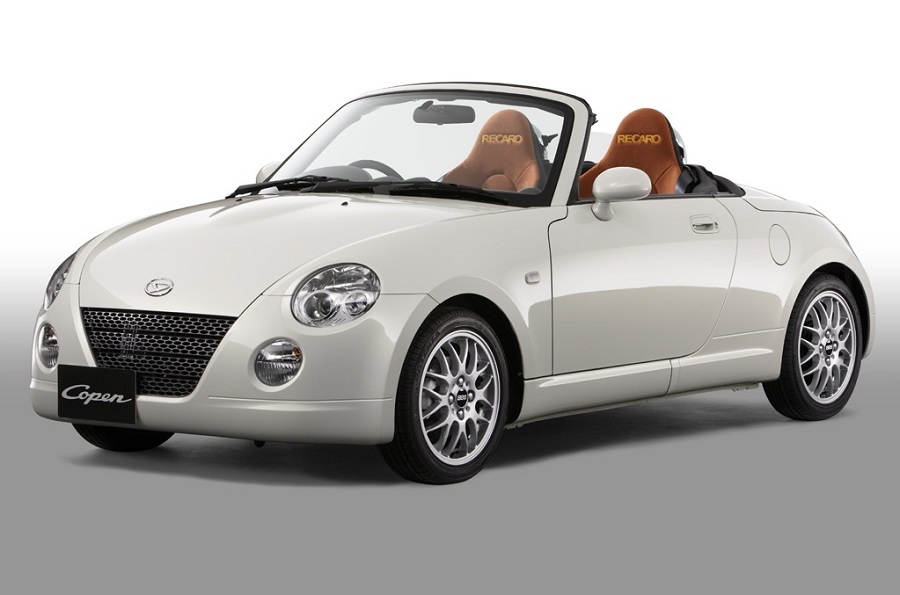
Daihatsu Copen
The noughties bridge between the Cappuccino era cars and the modern Honda S660 was this, the Daihatsu Copen. Available with a kei-spec 660cc engine or a larger 1.3-liter unit, the Copen was surprisingly successful not only in Japan but in export markets too.
It’s got an electronic folding aluminum roof and a reasonable amount of onboard kit for what it is. Top spec editions even had heated seats! Folks wanting something fun but dynamically manageable will get a lot out of the Copen. Its blend of rear-wheel drive, 8000rpm redline and a manual transmission makes it fun to dart about in, but the relative lack of power (as you’d expect from a kei car) makes it hard to get things really wrong. As such, they’re a good entry point for somebody looking to improve their craft as a driver. And, compared to many similar vehicles, these will be easier to find outside of Japan. Besides, how can you say no to a car with a beaming smile like that on its face?
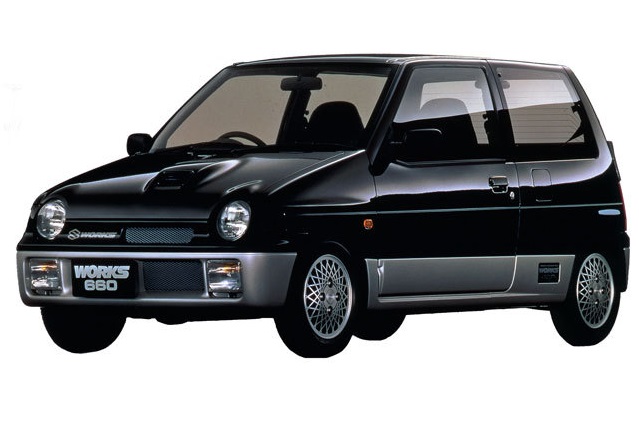
Suzuki Alto Works
The Suzuki Alto Works is essentially a kei hot hatch, which is a pretty cool concept, right? The Alto Works has been through multiple variations over many years, but the one which garners the most love is that of the Mk3, no doubt helped by its presence in the Gran Turismo video game series.
No prizes for guessing the engine specs, but it does come with a big aggressive hood scoop to aid airflow into the turbocharger’s intercooler. The RS/R version is all-wheel drive too, which is quite novel (especially for a kei car of this age). As a testament to the car’s design brief, you’ll find one of the ‘wordiest’ plaques I’ve ever seen attached to a piece of bodywork. It reads, and I quote, “We offer the ultimate Works to those who really appreciate performance keep on moving”.
Inside, you’ll find a super basic interior, but the seat upholstery in some cars looks as though someone blended the highly sought-after Recaro Confetti design with HKS’s oil splash. The result is something which isn’t as good as either of those two things, but characterful enough to be worthy of a car like the Alto Works.
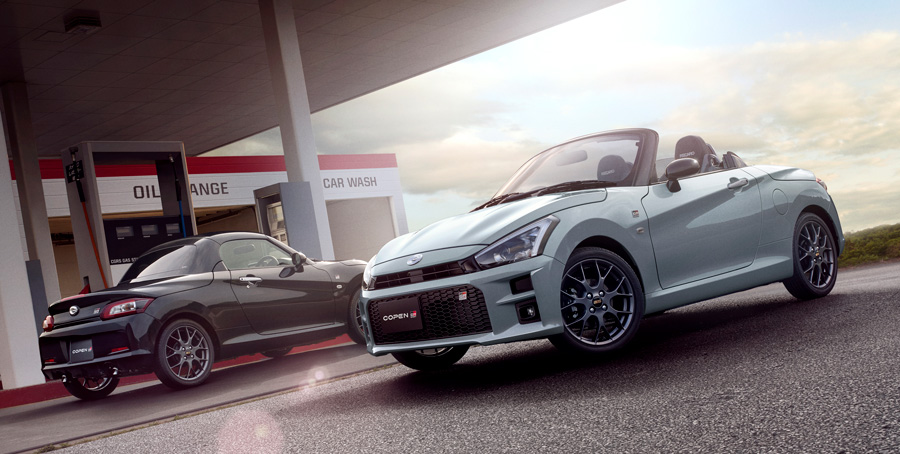
Toyota Copen GR Sport
The Daihatsu Copen we mentioned earlier still lives on today! The new generation car comes in a variety of different body styles. The regular Copen ‘Robe’ features a modern more aggressive front fascia, while the Copen ‘Cero’ features circular headlights and a smiley face resembling the Copen of old. Then, somewhat bizarrely, there’s the Copen ‘XPLAY’, which is covered in crossover-style cladding, except more extreme than most of those wannabe SUVs. The top of the range model, however, is the Copen GR Sport.
GR of course stands for Gazoo Racing; Toyota Japan’s in-house performance division. Gazoo Racing is responsible for Toyota’s five outright Le Mans victories, and you’ll find its initials on all of the Japanese marque’s hot road cars, from the GR Supra to the GR 86. Admittedly, the Copen GR Sport isn’t quite as honed in as other GR cars. Limited by kei regulations, its internals remain true to the regular Copen trio. Instead, what you’re paying for is essentially a comprehensive styling package. Most notably, the front bumper resembles that of the GR Yaris, while a set of 16-inch BBS rims complements the bodywork. Inside, you get a Momo steering wheel and GR Recaro bucket seats.
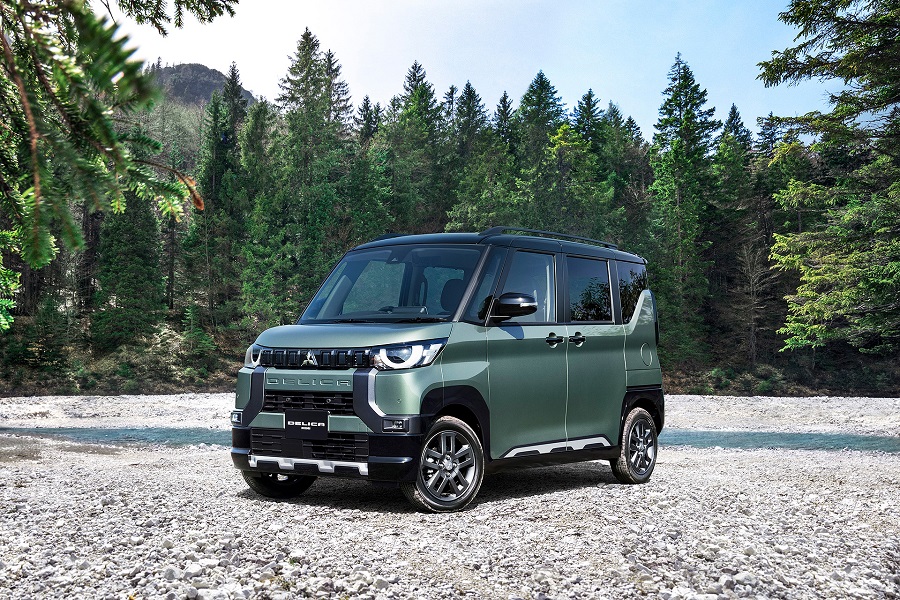
Mitsubishi Delica Mini
If you’re not aware of the *actual* Mitsubishi Delica, you’re missing out. In short, it’s basically what would happen if you crossbred an MPV with an off-road SUV. The result is quite spectacular. Anyway, the Delica Mini takes that concept and shrinks it down into a kei-sized package. That means that you get genuine off-roading tech in this diminutive little adventure box.
All-wheel drive is optional, but if you choose it, you get specially tuned dampers to better deal with harsh terrain, as well as Hill Descent Assist and Grip Control. The latter of which helps drivers to put the Delica Mini’s power down effectively onto slippery surfaces.
Adding to the adventurous nature of this car, the interior is water-repellent and (supposedly) stain resistant, meaning you can climb in and out without having to care too much about what mess you’re dragging in with you. That said, we wouldn’t recommend hosing its insides down, classic Land Rover style. There’s too much electronic wizardry onboard for that. The rear doors are sliders too, which I think is quite neat.
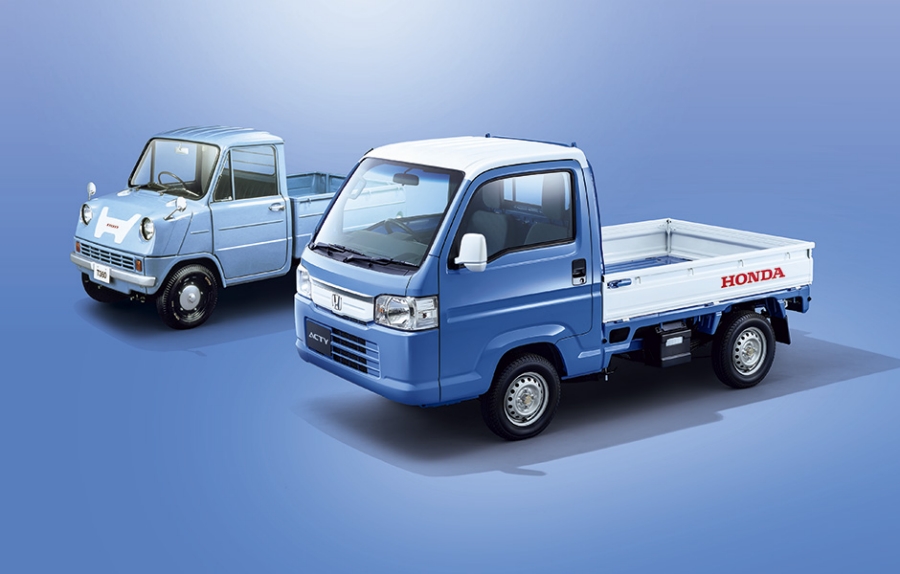
Honda Acty
Let’s end on a classic, shall we?
Kei trucks are enjoying a peak in Western popularity at the moment, with segments of the enthusiast scene shunning overindulgent V8 Americana for these little workhorses instead. The Honda Acty is one of the OGs of the genre, having been around for decades. As well as being available with a flat bed, you can also find Actys with van or minivan bodystyles too.
Not everyone views the Acty as just a hard worker though. Some of the scene’s madder modders have begun to tune them, stance them, and turn them into show cars!

